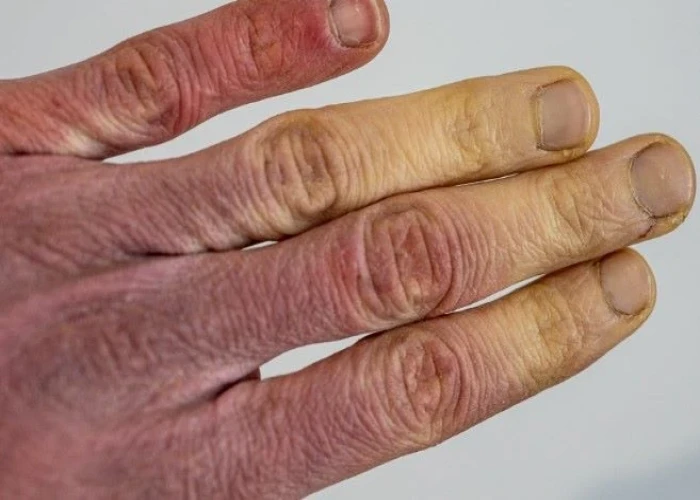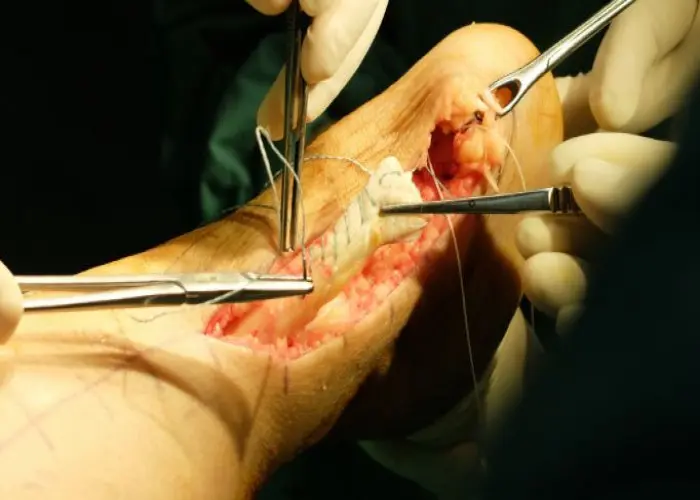 Welcome
Welcome
“May all be happy, may all be healed, may all be at peace and may no one ever suffer."
Raynaud's disease

Raynaud's disease, also known as Raynaud's phenomenon, is a condition that affects blood flow to the fingers and toes, causing them to feel numb, cold, and/or painful. Raynaud's is caused by the blood vessels in the affected areas contracting excessively and restricting blood flow. This can be triggered by cold temperatures or emotional stress.
Symptoms of Raynaud's disease can include color changes in the skin of the fingers or toes (usually turning white, then blue, then red), tingling or numbness, and pain or discomfort. These symptoms can last anywhere from a few minutes to several hours.
There are two types of Raynaud's disease: primary and secondary. Primary Raynaud's disease is the most common form, and it typically develops in people under the age of 30. It is usually not associated with any underlying medical condition. Secondary Raynaud's disease, on the other hand, is usually caused by an underlying medical condition, such as an autoimmune disorder or a connective tissue disease.
Treatment for Raynaud's disease may include lifestyle changes to avoid triggers, such as staying warm and avoiding smoking, stress reduction techniques, and medications to help relax the blood vessels and improve blood flow, such as calcium channel blockers. In more severe cases, surgery may be necessary to improve blood flow to the affected areas.
Prevention of Raynaud's disease involves avoiding triggers, such as cold temperatures and stress, and making lifestyle changes to improve blood flow, such as regular exercise and quitting smoking. If you experience symptoms of Raynaud's disease, it is important to discuss them with your healthcare provider to determine the appropriate treatment plan.
Research Papers
Disease Signs and Symptoms
- Pale skin color (pallor)
- Toe pain
- Joint pain
- Joint stiffness
- Enlargement of prostate gland
Disease Causes
Raynaud's disease
Doctors don't completely understand the cause of Raynaud's attacks, but blood vessels in the hands and feet appear to overreact to cold temperatures or stress.
Blood vessels in spasm
With Raynaud's, arteries to your fingers and toes become narrow and briefly limit blood supply when exposed to cold or stress. Over time, these small arteries can thicken slightly, further limiting blood flow.
Cold temperatures are most likely to trigger an attack. Exposure to cold, such as putting your hands in cold water, taking something from a freezer or being in cold air, is the most likely trigger. For some people, emotional stress can trigger an episode.
Primary vs. secondary Raynaud's
There are two main types of the condition.
- Primary Raynaud's. Also called Raynaud's disease, this most common form isn't the result of an associated medical condition. It can be so mild that many people with primary Raynaud's don't seek treatment. And it can resolve on its own.
- Secondary Raynaud's. Also called Raynaud's phenomenon, this form is caused by an underlying problem. Although secondary Raynaud's is less common than the primary form, it tends to be more serious.
- Signs and symptoms of secondary Raynaud's usually appear around age 40, later than they do for primary Raynaud's.
Causes of secondary Raynaud's include:
- Connective tissue diseases. Most people who have a rare disease that leads to hardening and scarring of the skin (scleroderma) have Raynaud's. Other diseases that increase the risk of Raynaud's include lupus, rheumatoid arthritis and Sjogren's syndrome.
- Diseases of the arteries. These include a buildup of plaques in blood vessels that feed the heart, a disorder in which the blood vessels of the hands and feet become inflamed, and a type of high blood pressure that affects the arteries of the lungs.
- Carpal tunnel syndrome. This condition involves pressure on a major nerve to your hand, producing numbness and pain in the hand that can make the hand more susceptible to cold temperatures.
- Repetitive action or vibration. Typing, playing piano or doing similar movements for long periods and operating vibrating tools, such as jackhammers, can lead to overuse injuries.
- Smoking. Smoking constricts blood vessels.
- Injuries to the hands or feet. Examples include a wrist fracture, surgery or frostbite.
- Certain medications. These include beta blockers for high blood pressure, migraine medications that contain ergotamine and sumatriptan, attention-deficit/hyperactivity disorder medications, certain chemotherapy agents, and drugs that cause blood vessels to narrow, such as some over-the-counter cold medications.
Disease Prevents
Disease Treatments
Disease Diagnoses
Disease Allopathic Generics
Disease Ayurvedic Generics
Disease Homeopathic Generics
Disease yoga
Raynaud's disease and Learn More about Diseases

Wilms' tumor

Essential tremor

Hantavirus pulmonary syndrome

Cough headaches

Ice cream headaches

Achilles tendinitis

Fibromyalgia

Toxoplasmosis
Raynaud's disease, রায়নাউদস রোগ
To be happy, beautiful, healthy, wealthy, hale and long-lived stay with DM3S.
